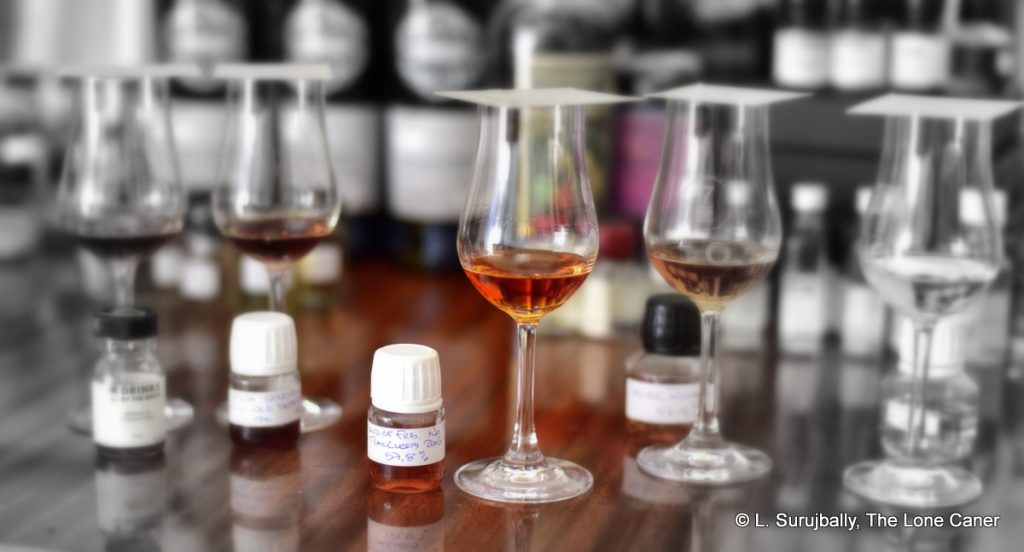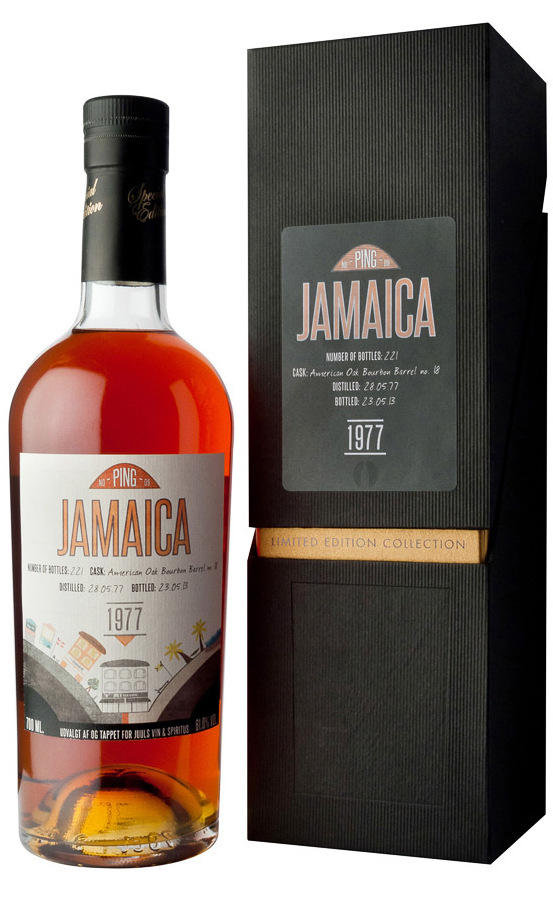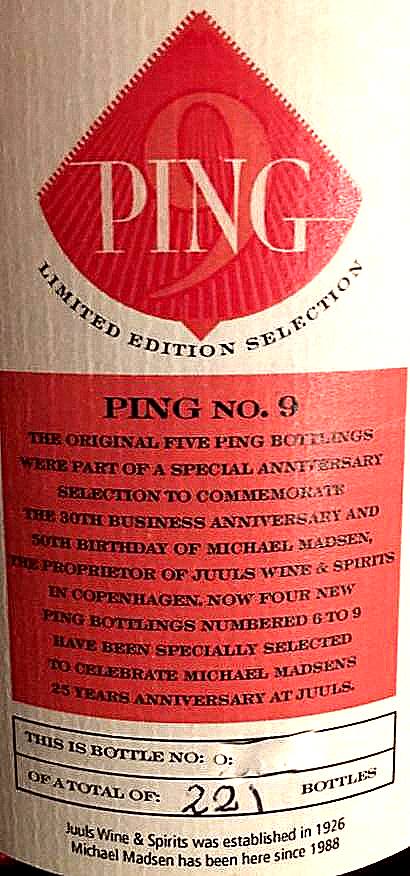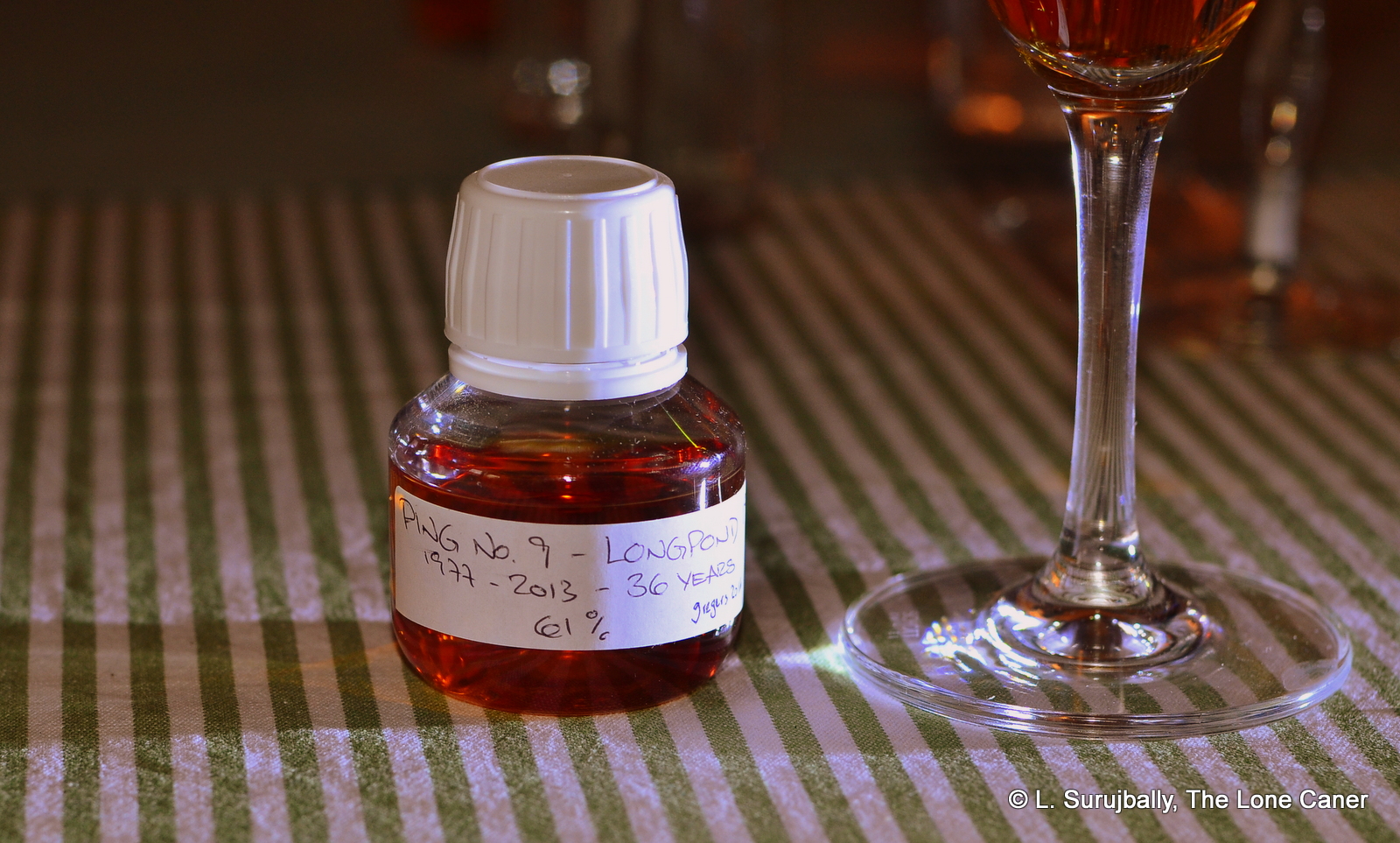Rumaniacs Review #146 | R-0985
This is one of those rare instances where the subject is not some dusty old find from Ago with dust flaking from its shoulders, but a relatively recent bottling; and rather more than less is known about the rum, because in this instance, not only did I have the bottle in my grubby little paws, but happily it was also sporting a quite informative label. Oh, and it was a great Guyanese rum to boot. Those who bought one are surely happy they did so, or should be.
This was an independent bottling done for the Danish spirits shop Juuls (an establishment I heartily recommend for its selections and expertise, though I’ve not been fortunate enough to set foot inside it myself) by the Scottish distiller and blender Ian Macleod. IM is a small company set up in 1933 in the small town of Broxburn, just slightly west of Edinburgh, and they were pretty much in the whisky blending game. This changed in 1993, when they acquired a gin making concern, but the real forays into rum came in 1996 with the acquisition of Trawlers and Watson’s rum brands (Watson’s being primarily Guyana rum, while Trawlers being a blend of Guyana and Barbados).
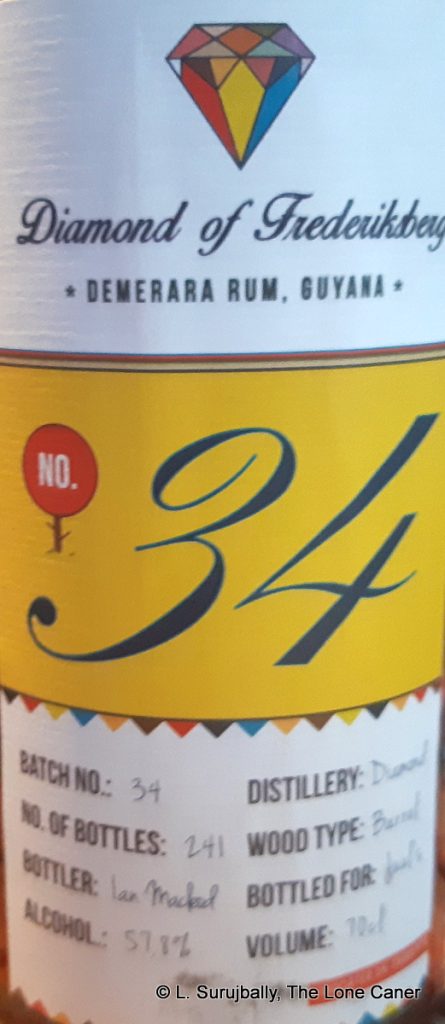 Occasionally the company indulged itself with some special rum bottlings, though you would be hard pressed to find out much about any of them, and even Rum-X only has a couple. This one was a special order for Juuls, bottled in 2015 from a single cask yielding 241 bottles at 57.8%. What does the “No. 34” mean? It’s the cask number (not the series number, so those looking for Nos. 1-33 can stop their search), and the “Diamond of Frederiksberg” is a nod to the city where Juuls is found and the Guyanese distillery of origin. Rums of this kind were not and are not a staple of Ian Macleod’s output – when doing rums at all they stick with Trawler and Watsons, or make cheap underproof Jamaican’s via the Lang’s brand or undisclosed cheaper blends under the King Robert II label. Single casks like this are a very occasional one-off or special order which is why I feel ok placing it in the Rumaniacs section.
Occasionally the company indulged itself with some special rum bottlings, though you would be hard pressed to find out much about any of them, and even Rum-X only has a couple. This one was a special order for Juuls, bottled in 2015 from a single cask yielding 241 bottles at 57.8%. What does the “No. 34” mean? It’s the cask number (not the series number, so those looking for Nos. 1-33 can stop their search), and the “Diamond of Frederiksberg” is a nod to the city where Juuls is found and the Guyanese distillery of origin. Rums of this kind were not and are not a staple of Ian Macleod’s output – when doing rums at all they stick with Trawler and Watsons, or make cheap underproof Jamaican’s via the Lang’s brand or undisclosed cheaper blends under the King Robert II label. Single casks like this are a very occasional one-off or special order which is why I feel ok placing it in the Rumaniacs section.
Strength – 57.8%
Colour – Red-amber
Nose – Light and sweet, with wax and brine and esters. The fruits that emerge are mostly from the dark and lush side: plums, dates, prunes for the most part. Also brown sugar, molasses, coffee, unsweetened chocolate and vanilla; with water and after opening up it becomes rather more tannic and oak-forward with a few background licorice notes, and the whole remains quite well done and inviting.
Palate – Sharp and hot, yet well controlled. Medium sweet with molasses, stewed apples, toffee, vanilla, sweet cardamom rice drizzled with hot caramel. Not precisely a riot of complexity, just sure footed and really tasty. Some raisins, more dark fruits, licorice, coffee, and this is where I would suggest there’s definitely some Port Mourant pot still juice in here.
Finish – Medium, warm, sweetish and spicy with vanilla, cinnamon, cumin, cardamom and caramel. The molasses and licorice take a back seat, and it’s actually something of a shame the experience is over so quickly.
Thoughts – Although the label says “Diamond,” any reasonably knowledgeable rum guy knows this is kind of meaningless since all the stills in Guyana are now located at the estate of that name, and especially with the older rums, care has to be taken assigning a rum just to “Diamond”. I think this is probably a Port Mourant rum, though it could as easily be from Versailles – the richness bends me more to the former, however.
Whichever still made it, it’s a quiet stunner of a rum and it’s a shame Ian Macleod never continued mining this vein and instead went mass market. Rums like this from so recent a time are a rarity (most of this quality are from further back in time, or much older) and its my regret that although I had a great time trying it with my Danish friends and even have a sample squirrelled away, there aren’t more bottles in circulation for others to enjoy as well.
(89/100) ⭐⭐⭐⭐
Other notes
- Gregers, who pretends he owns our bottle, gave me the details on the label naming convention, as well as trotting the rum out of his stash for me to try. Thanks!
- Only one bottle ever came up for auction of late and that was here for £112 in May 2022; another Diamond, the No. 33, was also on sale that month, and sold for £143, though I’ve heard people opine that it’s not as good as this one. These are the only ones aside from the three on Rum-X (which are not from this series) which I’ve been able to trace.
